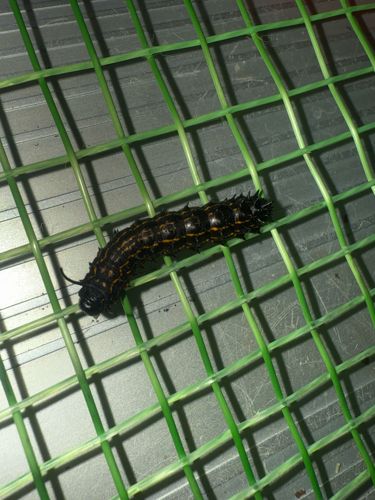Black Swallowtail Caterpillar
Scientific Name: Papilio polyxenes
Order & Family: Lepidoptera (Order), Papilionidae (Family)
Size: Larvae typically grow up to 2 inches (5 cm) in length.

Natural Habitat
Gardens, meadows, and open fields, often found on host plants such as parsley, dill, fennel, and carrots.
Diet & Feeding
Herbivorous. The caterpillars feed exclusively on the foliage of host plants, primarily members of the carrot family (Apiaceae), including parsley, dill, fennel, and often rue (Rutaceae).
Behavior Patterns
The caterpillar seen in the image is likely in its late instars, characterized by its black, green, and yellow markings. When disturbed, it can evert a reddish-orange osmeterium, a fleshy, Y-shaped organ located behind its head, which releases a foul-smelling substance as a defense mechanism against predators. Caterpillars will eventually pupate, forming a chrysalis, before emerging as adult Black Swallowtail butterflies. They are active during the day.
Risks & Benefits
Potential risks: Generally none to humans; they are not venomous or harmful. They can be considered a minor pest to culinary herbs if present in large numbers in a garden. Benefits: As adults, Black Swallowtail butterflies are important pollinators; the caterpillars are also part of the food chain, serving as a food source for birds and other insectivores. They are a common and beloved garden visitor, appealing to nature enthusiasts.
Identified on: 9/8/2025